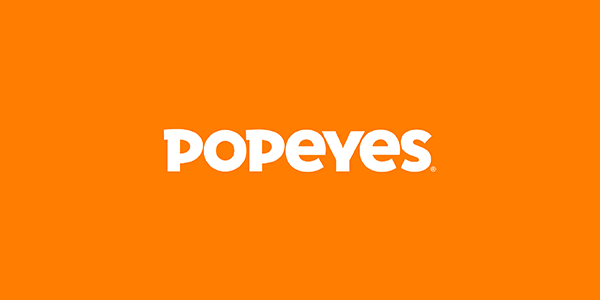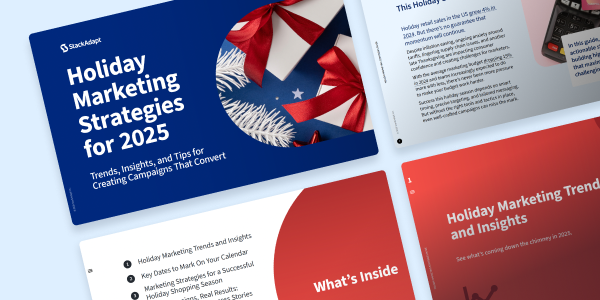Connecting Brand to Demand: A Guide to Marketing Orchestration

TL;DR—A Guide to Marketing Orchestration
- Marketing orchestration bridges the long-standing gap between brand and performance by uniting paid, owned, and earned channels into a single, data-driven strategy.
- Senior marketers act as system architects, aligning creative, data, and measurement so every channel supports a coherent customer journey.
- Creative consistency and data cohesion are the backbone of orchestration: shared assets, unified taxonomies, and outcome-based KPIs ensure brand equity translates into measurable demand.
- Agencies must lead integration, designing collaborative processes, cross-functional planning, and unified measurement frameworks that link storytelling to ROI.
Senior marketers and agency leaders are facing a paradox: audiences have never been easier to reach, yet harder to connect with meaningfully.
B2B consumers, for instance, interact with 10 different channels before making a purchase. This means marketing campaigns need to cover more channels over a longer period of time.
The challenge isn’t whether to invest in connected TV (CTV), video, audio, display, or digital out-of-home (DOOH), but how to make them work together to drive both brand equity and sales. Many marketers still manage these channels in silos, with disconnected planning, fragmented measurement, and overlapping budgets.
The result? Missed efficiencies, inconsistent messaging, and murky attribution. Even as 85% of marketers claim confidence in measuring ROI, only one in three can do so holistically across channels.
For agencies, this fragmentation creates strategic tension. Clients expect unified reporting and full-funnel performance, yet teams often operate on separate data stacks and KPIs. Leadership faces pressure to prove how investment in upper-funnel channels like video or CTV actually drive lower-funnel outcomes.
“Without an integrated approach,” says Kenny Ginapp, Director of Enterprise Sales at StackAdapt, “the link between brand and demand remains tenuous, leaving performance teams chasing conversions and brand teams defending budgets.”
The next frontier of orchestration connects adtech and martech, aligning media, email, and CRM around one consistent customer experience.
This article explores how to close that gap. It outlines a modern framework for marketing orchestration and presents an agency blueprint for planning, executing, and measuring campaigns that bridge awareness and action.
Strategic Frameworks for Marketing Orchestration
Senior marketers now operate less as media buyers and more as systems architects responsible for connecting channels, teams, and data into one coherent growth engine.
Marketing orchestration is a leadership framework for orchestrating how brand and demand investments reinforce one another across every format.
1. Channel Architecture That Mirrors the Customer Journey
A unified strategy begins with understanding how audiences move, not how media is sold. Each format should serve a deliberate role within the customer journey:
- CTV and video elevate storytelling.
- Display and native sustain consideration.
- Audio and DOOH reinforce presence in contextual moments.
- Email deepens engagement through personalized follow-ups that convert awareness into action.
The goal is continuity. Leaders set the mandate that every stage of the funnel must be supported, with seamless transitions between awareness and conversion experiences.
Effective marketing orchestration unites both paid media formats (CTV, display, video, audio, DOOH) and owned marketing channels such as email to deliver a consistent, measurable customer journey.
2. Creative Consistency at Scale
In a multi-format world, consistency is an efficiency multiplier. When creative expression ladders to a single brand idea, cross-channel marketing investments amplify one another.
Senior marketers should institutionalize creative governance (shared brand guidelines, centralized asset libraries, and unified campaign narratives). Unified orchestration means the same brand story appears seamlessly in an email subject line as in a CTV ad or podcast spot, reinforcing familiarity and trust across the customer journey.
The payoff is not just recognition but compounded impact: a viewer who encounters aligned messages across formats is far more likely to convert.
3. Data Cohesion and Cross-Channel Intelligence
Integration lives or dies on data alignment. Strategic leaders ensure audience definitions, measurement taxonomies, and attribution models are shared across teams and vendors.
Instead of fragmented KPIs by channel, they enforce outcome-based metrics that connect upper- and lower-funnel performance—awareness lift, incremental reach, and cost per engaged user feeding into ROI and sales outcomes.
Integrating CRM and email engagement data with paid media insights gives marketers a 360° view of customer intent, allowing cross-channel sequencing that feels orchestrated, not automated.
This unified data spine transforms fragmented reporting into cross-channel intelligence that supports faster, smarter decisions.
4. Organizational Orchestration
Marketing orchestration also demands cross-functional alignment.
Executives must design processes that foster collaboration between brand, media, and analytics teams, breaking down historical silos.
Joint planning sessions, shared dashboards, and integrated post-campaign reviews turn cross-functional friction into strategic synchronization.
Leaders who embed these rituals create teams that think in systems, not silos.
5. Continuous Optimization and Learning
Finally, integration is not static. High-performing organizations view every campaign as a data engine that sharpens the next.
By connecting creative performance to business outcomes, marketers can rebalance spend dynamically, shifting investment between CTV, display, audio, or DOOH based on how each contributes to the collective objective.
This iterative mindset converts multi-format complexity into a self-improving cycle of effectiveness.
When viewed through this strategic lens, marketing orchestration becomes an enterprise capability, not a campaign exercise.
The agency or brand that can align creativity, data, and measurement under one strategic framework doesn’t just reach audiences across channels—it moves them coherently from curiosity to conversion, and from first impression to lasting loyalty.
The Agency Blueprint: Orchestrating Integrated Campaigns
The following blueprint distills the leadership practices that enable agencies to turn complexity into clarity.
1. Start With Unified Objectives
Integrated campaigns begin with shared intent. Define success through business outcomes, not channel metrics (awareness lift, qualified leads, incremental sales, or ROI). Use these to align both brand and performance teams from the outset.
A unified KPI framework prevents channel silos and ensures every activation contributes to the same goal.
Set cross-format objectives that are co-owned by strategy, creative, and performance teams. This builds accountability for results, not just delivery.
2. Architect the Channel Mix Around Customer Flow
Rather than dividing spend by format, design the media architecture around how customers actually move through awareness, consideration, and action.
- Awareness: CTV, online video, and DOOH for storytelling and scale.
- Consideration: Audio, native, and email nurture sequences to reinforce relevance, as well as dynamic creative optimization (DCO) for personalization.
- Conversion: Display retargeting, shoppable video, personalized emails, and contextual placements for activation—all with automated workflows triggered by real-time behaviour.
A prospect might see a CTV ad, engage with a retargeted display, and later receive a personalized email follow-up or triggered CRM message—all parts of a coordinated brand-to-demand journey.
This structure ensures every touchpoint builds on the last, creating a connected journey instead of a fragmented set of impressions.
Treat the media mix as a narrative arc, not a menu of buys.
3. Align Creative Systems, Not Just Assets
Creative cohesion doesn’t mean identical executions, but a consistent brand voice that adapts by format.
Establish a central creative platform that houses campaign concepts, message frameworks, and modular assets accessible across teams. This enables efficient production without sacrificing brand integrity.
Build “creative governance” into the process, so every CTV, display, and audio ad feels like part of one brand conversation.
4. Institutionalize Cross-Functional Collaboration
Multi-format success depends on organizational design, not tools alone. Encourage co-planning sessions where creative, media, and analytics teams develop strategies together. Assign an integration lead or campaign conductor responsible for maintaining coherence from ideation to reporting.
Break the relay model. Replace hand-offs with shared ownership across disciplines.
5. Adopt Unified Measurement and Learning Loops
Measurement must evolve from channel-by-channel reporting to multi-format intelligence. Combine methods:
- Brand lift studies for upper-funnel impact.
- Incrementality testing for cross-channel contribution.
- Marketing mix modelling for total ROI.
Email engagement metrics (open rates, CTR, and conversions) can serve as indicators of upper-funnel resonance, revealing which ad narratives inspire continued interest and which audiences should be re-engaged through paid channels.
Integrate insights into a single dashboard to understand how each format influences the full customer journey. Then, apply learnings to the next campaign cycle to create a continuous improvement loop.
Build a culture where performance data informs creativity, and creativity informs performance.
6. Operationalize for Agility
Finally, agencies must be structured for real-time optimization. Centralized dashboards, agile budget reallocations, and consistent reporting cadences keep teams responsive to audience behaviour and performance shifts.
When leadership embeds agility into process design, campaigns stay cohesive even as market conditions change.
Orchestration is a dynamic process, so equip teams to adjust the tempo without losing the rhythm.
“A well-orchestrated multi-format campaign operates as one organism,” says Ginapp. “The creative is cohesive, the data is unified, and the measurement tells a single story of brand and business growth.”
For senior marketers, this blueprint is less about managing more channels and more about leading a system in which every channel works in concert to connect brand and demand.
Get Started With Marketing Orchestration
Connecting brand to demand across multiple formats is now the defining challenge—and opportunity—for modern marketers. Fragmented channels, evolving measurement models, and heightened client expectations demand orchestration, not addition.
For agency leaders, success hinges on strategic integration: unified objectives, consistent creative systems, shared data frameworks, and agile collaboration.
When these elements align, CTV, display, video, audio, DOOH, and email stop functioning as separate investments and start performing as parts of a single, intelligent ecosystem. True marketing orchestration connects storytelling and performance across every channel—paid, owned, and earned—so that media, email, and CRM efforts amplify one another.
StackAdapt’s AI-powered marketing platform allows you to activate 1st-party data, orchestrate connected customer journeys across adtech and martech tools, including email, and drive results across channels.
Request a demo today to get started with your marketing orchestration strategy.






